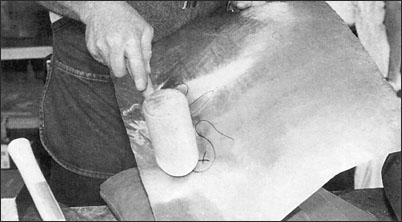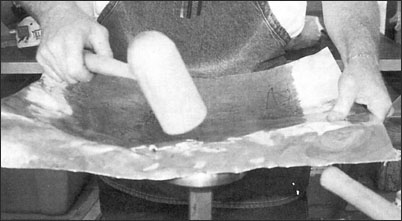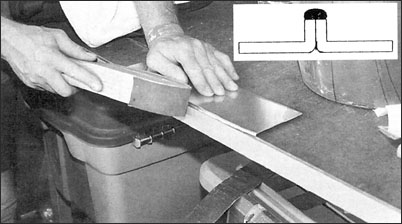The Fine Art of Metal Shaping Part 5
 |
Airplane designers try to stay away from compound curves which might complicate manufacturing processes. But when necessary for some reason, they can be done. Here the round end of a hickory mallet is being used to work in a reverse curve. Doing this kind of work requires a thorough knowledge of the behavior of metal when it is being worked.
 |
Here the dents made by striking the metal with a
mallet
while a
sand bag
is under it are being reduced by using the flat end of the mallet and a button-head stake. This is another
example of how an expert metal worker constantly changes tools to suit the needs of the moment.
|
|
In this picture, a curved-face
whapper
is being used along with a 12-inch "T" stake to move the smoothing process along. These whappers average 14
inches in length. A sense of which tools to use and when must be gained through experience.
 |
Here a flat-faced whapper and the sharp edge of a workbench are being used to bend over the edge of a sheet of aluminum, as the first step in making a flanged joint such as is shown in the inset drawing. Does a much smoother job than would a mechanic's hammer. If a bending brake is not handy, you could make such a whapper from scrap hardwood and leather.
See also The Fine Art of Metal Shaping II
Back to Articles by the Tinman



